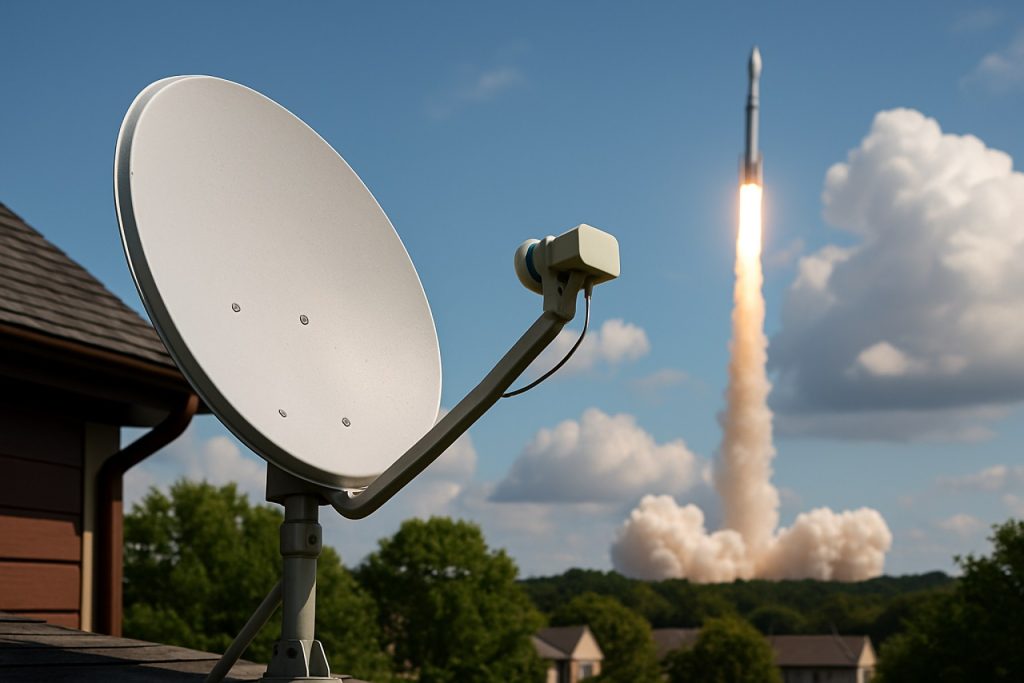
New ‘Tech-Neutral’ Broadband Policy Unshackles Satellite Internet—Here’s What It Means for America’s Digital Future
The NTIA’s major shift in broadband policy could supercharge satellite internet and shake up America’s race to close the digital divide in 2025.
- All Technologies Welcome: Fiber, LEO satellite, cable, and wireless can now vie for BEAD funds.
- Speed Threshold: Services must deliver at least 100 Mbps down / 20 Mbps up, latency ≤ 100 ms.
- $42.5 Billion at Stake: BEAD is backed by massive federal investment via the Infrastructure Act.
- Millions of Households Affected: Policy shift could reach remote zones where only satellites can deliver.
Sweeping federal policy reform just bulldozed old barriers in the $42.5 billion BEAD broadband program, opening the floodgates for satellite internet to compete head-to-head with fiber and cable across the U.S.
The National Telecommunications and Information Administration (NTIA) dropped a bombshell Friday: States and territories are now officially required to take a “technology-neutral” approach when picking how to deliver high-speed internet to unserved and underserved communities.
Gone is the “fiber-first” dogma, which previously sidelined potentially game-changing options like low-Earth orbit (LEO) satellite and advanced wireless. The new rules mean faster and broader broadband, reaching rugged mountains, vast plains, and remote communities with technologies that work best for each geography.
Q: Why Did BEAD Ditch ‘Fiber-First’ for Tech-Neutrality?
NTIA’s move comes as pressure mounts to deliver reliable internet to every rural corner—fast. Experts say the rigid fiber focus left out proven solutions, like SpaceX’s Starlink or next-gen fixed wireless, as legitimate contenders. By removing “unnecessary burdens” from the last Administration’s rules, the NTIA aims to maximize speed, flexibility, and value for taxpayers.
How Will the New BEAD Policy Affect Consumers?
Americans in remote deserts, mountain villages, and farmlands stand to gain the most. Satellite services—once considered “third tier”—can now access funding for buildouts, meaning full-speed, modern internet could reach places where fiber is too costly or impossible to deliver.
- Ultra-rural households may finally get streaming-ready connections—many for the first time.
- Competition between fiber, satellite, and wireless could drive down prices and speed up buildouts.
- Minimum required speeds (100/20 Mbps and ≤100 ms latency) ensure no slow-lane solutions.
Q: Which Companies Stand to Gain the Most?
LEO satellite providers like SpaceX’s Starlink, global telecom giants, and agile wireless firms are poised for a major boost. Industry voices say deploying “the right tech in the right place” is finally possible. Starlink, in particular, which already has hundreds of thousands of U.S. customers, could see a rush of new public-funded deployments.
However, not all obstacles are gone. Local authorities still decide which project proposals win funding—and many prefer fiber builds for job creation. The next chapter will be written state by state, county by county.
How Can States and Localities Navigate the New Rules?
Experts recommend local planners weigh not just technology, but also cost, reach, and community needs. Smart “blended” deployments—fiber in towns, satellites for farmsteads—will connect more Americans, faster. The Satellite Industry Association lauds the move, urging states to use every tool available to close the digital divide.
Q: What Are the Next Steps for Households and Providers?
Stay tuned for your state’s BEAD updates. Providers like Starlink, Hughes, and AT&T are likely to announce new service areas and rates. Residents in hard-to-reach areas should register interest, test satellite options, and watch for announcements on project selection.
How to Tap Into Better Broadband in 2025
- Check your address for eligibility as BEAD projects roll out.
- Compare offers from fiber, cable, satellite, and wireless providers when available.
- Attend local broadband meetings or contact your state broadband office for the latest updates.
- Run a speed test and document your current service—it could help make your case for upgrades!
Universal, affordable high-speed internet just got far more possible. Don’t miss out—track your state’s next moves and push for technology that works in your backyard.
Checklist: Be Ready for the Broadband Revolution
- Monitor your state broadband websites for new rollouts
- Sign up for Starlink, HughesNet, or fiber interest lists
- Advocate for the best tech fit—satellite, fiber, or hybrid—for your region
- Test your current speeds to support eligibility
- Share your broadband needs at public forums and with local officials



